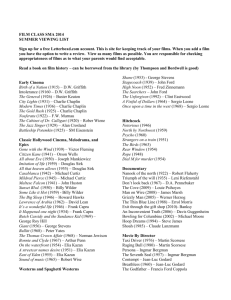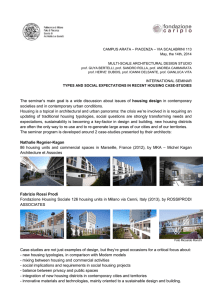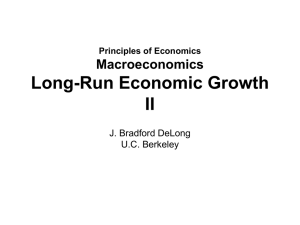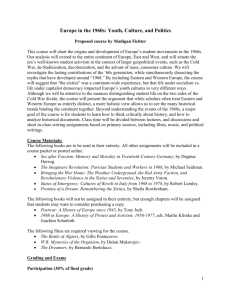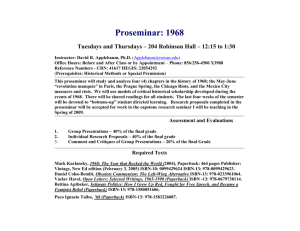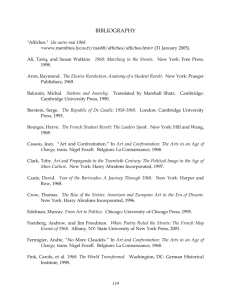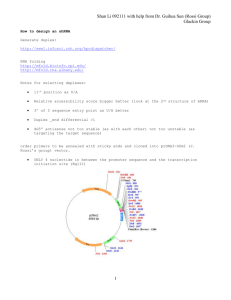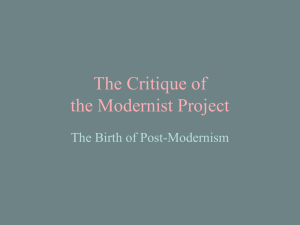Why do we need theory?
advertisement
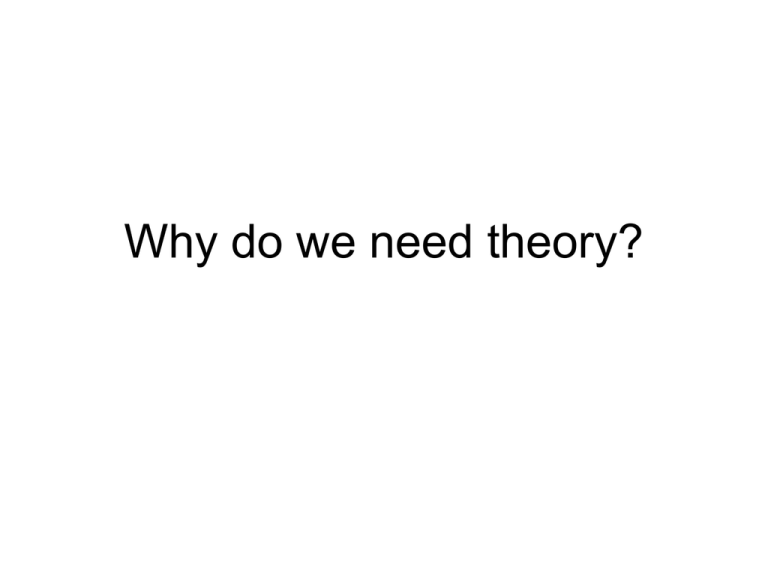
Why do we need theory? The late 1960s • • • • Society in crisis The Modern Movement in crisis Capitalism versus Marxism Cities in crisis - cars, employment, housing, leisure • Impending ecological crisis • Recognition of the rights of minorities - black, women, religious groups, hippies, counterculture etc. Building the Berlin Wall, 1961 Fidel Castro 1961 Vietnam War 1968 hippies, Martin Luther King, Student and worker riots Paris in May, Russian tanks in Prague August, antiVietnam War riots London, October Protest and underground press, London 1968 Pop art, nostalgia and pleasure in London The Bauhaus Exhibition and a commentary, September 1968 Falling idols of modernism: from Charles Jencks, Modern Movements in Architecture, 1973 Geoffrey Copcutt, Cumbernauld Civic Centre, 1966 ‘It’s not Cumbernauld’s fault that it happens to be in Scotland, but at 10 p.m. the Golden Eagle, the Kestrel and the Falcon all close, and this is it, as far as Cumbernauld Town Centre is concerned. On the upper terrace the Abatone fish bar keeps going until eleven. After that the centre is deserted, except for a few drunken stragglers weaving their way down the centre of the spine motorway. (After all, it’s the best lit route out of the centre, and there’s scarcely a car to be seen, except for the odd learner driver practising U-turns round the piloti). … It’s not good enough and it needn’t have happened that way.’ ‘Day Tripper: Two legs good: four wheels bad’, Architectural Design, September 1968, p.409 . ‘People on chat shows now dare to openly criticise the pack-ice pedestrian plazas of Cumbernauld … high rise living is held to be conducive to madness, and today the phrase “modern architecture has a lot to answer for” is uttered menacingly in public bars throughout the land.’ Martin Pawley, ‘Architecture on TV or it wont always be this easy’, Architectural Design, September 1971, pp.572-3. The Westway, London: vision and reality 1961-1970 The collapse of Ronan Point, Newham, 16 May 1968 photo by Gillian Daniell Protests against the rebuilding of Covent Garden, 1970 Robert Venturi, Complexity and Contradiction in Architecture, 1966 Venturi: use of architectural history and its concepts e.g. Mannerism Rejection of modernism: ‘Less is a bore’ Attention to the building as a sign origins of Post-Modernism Diagram from Roland Barthes, Mythologies, 1957 (French edition) From George Baird ‘La Dimension Amoureuse’ in Architecture’ first published 1967 The unavoidable meaning of architecture, explored through history and criticism: ‘If as Gombrich suggests, forms by themselves are relatively empty of meaning, it follows that the forms which we intuit will, in the unconscious mind, tend to attract to themselves certain associations of meaning. This could mean not only that we are not free from the forms of the past and from the availability of these forms as typological models but that, if we assume we are free, we have lost control over a very active sector of our imagination and of our power to communicate with others. It would seem that we ought to try to establish a value system which takes acount of the forms and solutions of the past if we are to gain control over concepts which will obtrude themselves into the creative process, whether we like it or not.’ Alan Colquhoun, ‘The Type and its Transformation’ first published 1967 Sigmund Freud and the Return of the Repressed ‘Repression: defense mechanism by which unacceptable impulse or idea is rendered unconscious. Mental process arising from conflicts between the Pleasure and Reality Principles. Impulses, memories and painful emotions arising from such conflicts, and thrust into the unconscious, still remain active, indirectly influencing experience and behavior, producing neurotic symptoms and also determining (normal) dreams.’ Richard Appignanesi Freud for Beginners From Venturi, Scott Brown and Rauch, Learning from Las Vegas, 1972 Aldo Rossi, The Architecture of the City, 1968/1980, introduction to the Portugese edition ‘I purposely limited myself to citing architects rarely but scholars from other disciplines frequently, beginning with geographers and historians. I also purposely refrained from placing a precise boundary between ancient and modern architects. It might seem strange that someone concerned with defining the boundaries of the corpus of architectural studies should make use of theses from disciplines outside of architecture, but in fact I have never spoken of an absolute autonomy of architecture.’ Lucca: Piazza del Anfiteatro From Rossi, The Architecture of the City ‘As opposed to the humanist architect of the sixteenth century, and the functionalist architect of the twentieth century, Rossi’s architect would seem to be an unheroic, autonomous researcher – much like his psycvhoanalyst counterpart who is similarly distanced from the the object of his analysis and who no longer believes in science or progress.’ Peter Eisenmann, Introduction to Rossi, The Architecture of the City Charles Jencks, The Semantic Space of Architecture, 1968

